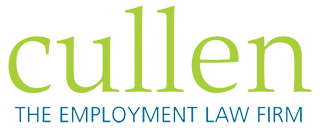Continuing to work from home in Level 2 and beyond
6 May 2020

Over the last six weeks, more New Zealanders than ever have been working from home in a cultural shift that has been seen all over the world. Time Magazine called the COVID-19 outbreak "the World's Largest Work-From-Home Experiment".
There are roughly one million "safe" workers already back at work under Level 3, increasing from around 500,000 "essential" workers who were in the workplace in Lockdown.
A number of New Zealand workers have been working from home throughout the alert Level restrictions. When and how they return to the workplace as restrictions relax will likely depend on the individual employer. Some businesses may still be feeling a lack of work due to the restrictions, others may have safety concerns that remain despite (or because of) relaxed restrictions. Other organisations may opt for a partial return to the office, in combination with some workers working from home.
If employers are electing to keep their workers at home even when the alert level permits a return to the workplace, there are several things to consider.
Keeping workers at home
When employers needed to rapidly shift employees to work from home, this was driven by a clear health and safety risk and a government direction to work from home if possible (and later that only essential workers could attend the workplace).
Once the Government guidance requiring homeworking expires, employers will still generally be entitled to direct employees to work from home, provided this is consistent with the employee's employment agreement and the employer's policies.
If the employment agreement or policies provides for a fixed workplace, then the employer should seek agreement from the employee to work from home. In the event they refuse, it is likely that the employer would have sufficient health and safety grounds to direct the employee to work from home, however this is untested.
Health and Safety considerations
Employers are obligated to ensure workers' safety in the workplace so far as is reasonably practicable. This duty still applies when employees are working from home.
WorkSafe has acknowledged that when New Zealand went into Alert Level 4, businesses had to do the best they could in the circumstances and limited time to ensure employees had a safe workspace. However, as the alert levels fall, what is "reasonably practicable" in the circumstance widens and there will be a greater expectation on employers to ensure all employees working remotely have access to appropriate equipment and support.
For instance, while during lockdown it may have been unavoidable to have employees in workstations that were not ergonomically sound, employers will be expected to remedy this now that it is possible to do so under the lower alert levels. It may also be good idea to update or create a health and safety policy that addresses working from home, to ensure everyone is aware of their rights and obligations.
Employees requesting to work from home
When an employer does decide to reopen the workplace for employees, there may be employees who want to continue working from home.
The Employment Relations Act provides employees with a right to request variations to their working arrangements. This could include changes to hours of work, days of work, and/or place of work (such as working from home some or all the time). To request a variation, the employee must submit a written request to their employer explaining the details of the requested variation and how long it would last, noting that the request is made under Part 6AA of the Act, and explaining any logistical changes the employer may need to make if the employee's request is approved.
If an employer receives a Part 6AA request, they must deal with it as soon as possible and within one month at the latest. An employer cannot arbitrarily deny a request for flexible working, they can only refuse the variation if it cannot be accommodated on one or more of the following grounds:
• Inability to reorganise work among existing staff;
• Inability to recruit additional staff;
• Detrimental impact on quality;
• Detrimental impact on performance;
• Insufficiency of work during the periods the employee proposes to work;
• Planned structural changes;
• Burden of additional costs; or
• Detrimental effect on ability to meet customer demand.
If an employee's request would be inconsistent with a collective agreement by which they are bound (employer must refuse the request in this instance).
An employee cannot challenge a refusal, unless the employer does not respond within the one month time frame, in which case they must refer the matter to a labour inspector. However, the application of this provision is largely untested by the courts.
Make a plan
Every business will have different circumstances to consider as we move through different alert Levels, as will every employee. Employers should start planning and initiating discussion about how working arrangements may change under new alert Levels, if they have not done so already.
This is not only a practical measure given Alert Levels can change with just 48 hours' notice, but it is also in line with the employer's duty of good faith and obligation to consult with employees about health and safety measures.


